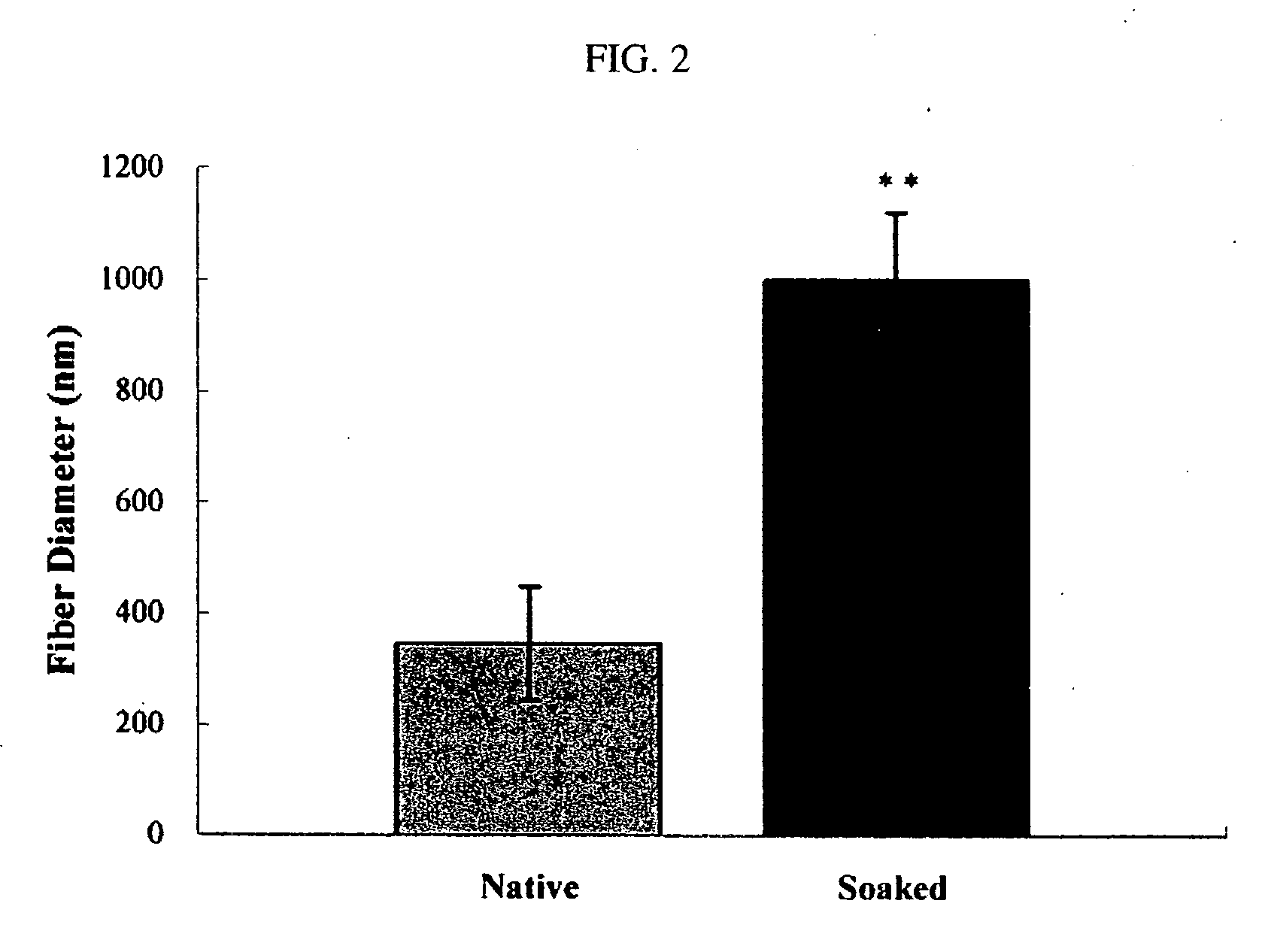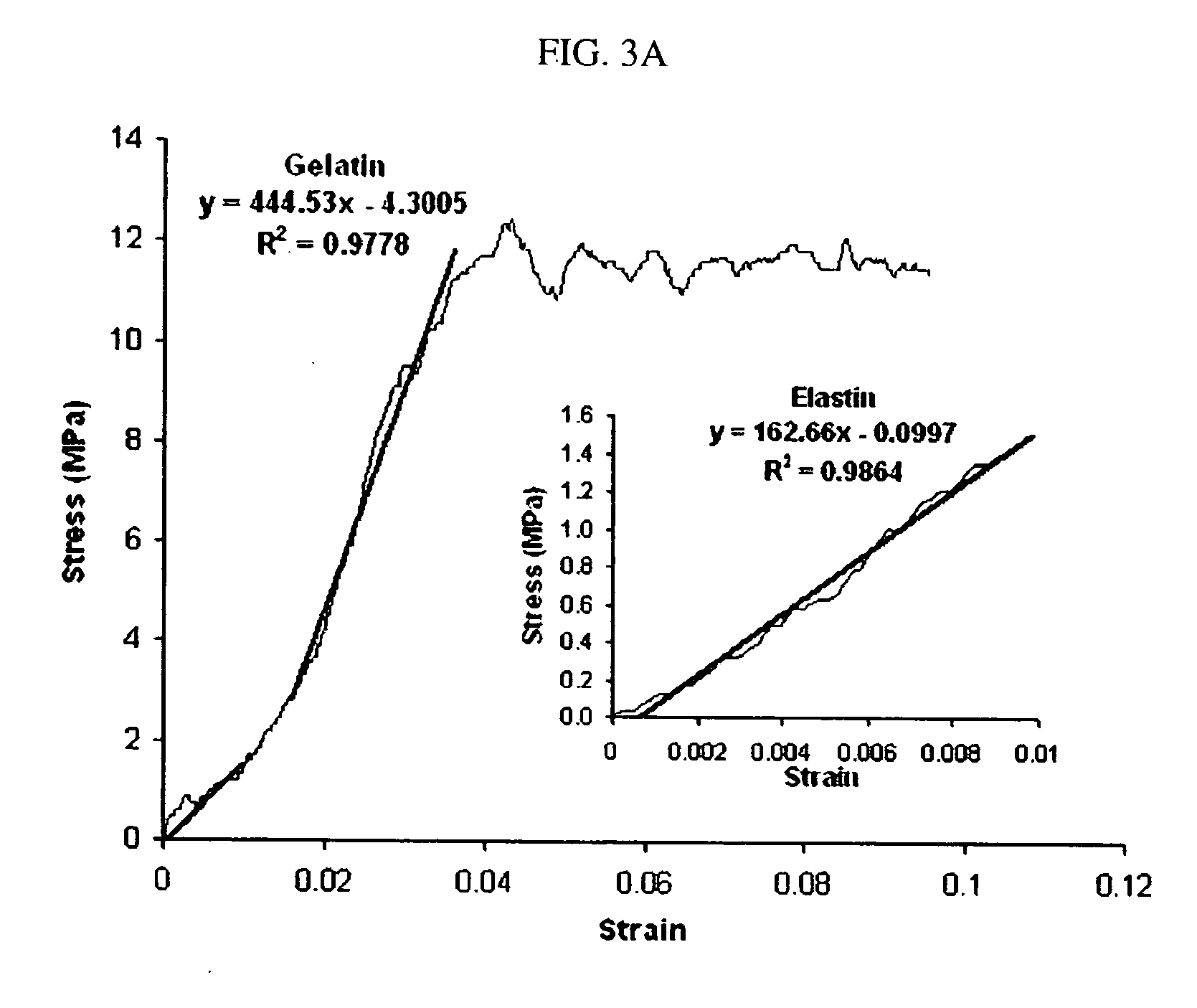Electrospun blends of natural and synthetic polymer fibers as tissue engineering scaffolds
a technology of polymer fibers and electrospun mats, which is applied in the field of engineering of functional three-dimensional (3d) tissue constructs, can solve the problems of high fiber density of electrospun mats, and insufficient crosslinking, so as to facilitate cell penetration and proliferation
- Summary
- Abstract
- Description
- Claims
- Application Information
AI Technical Summary
Benefits of technology
Problems solved by technology
Method used
Image
Examples
example 1
[0067] In this Example, composite scaffolds composed of synthetic and natural materials with physicochemical properties suitable for tissue engineering applications are described. Fibrous scaffolds were co-electrospun from a blend of a synthetic biodegradable polymer (poly-(lactic-co-glycolic acid), PLGA, 10% solution) and two natural proteins, gelatin (denatured collagen, 8% solution) and α-elastin (20% solution) at ratios of 3:1:2 and 2:2:2 (v / v / v). The resulting PLGA-gelatin-elastin (PGE) fibers were homogeneous in appearance with an average diameter of 380±80 nm, which was considerably smaller than fibers made under identical conditions from the starting materials (PLGA: 780±200 nm; gelatin: 447±123 nm; elastin: 1060±170 nm). Upon hydration, PGE fibers swelled to an average fiber diameter of 963±132 nm, but did not disintegrate. Importantly, PGE scaffolds were stable in an aqueous environment without crosslinking and were more elastic than those made of pure elastin fibers. In o...
PUM
| Property | Measurement | Unit |
|---|---|---|
| Ratio | aaaaa | aaaaa |
| Fraction | aaaaa | aaaaa |
| Fraction | aaaaa | aaaaa |
Abstract
Description
Claims
Application Information
 Login to View More
Login to View More - R&D
- Intellectual Property
- Life Sciences
- Materials
- Tech Scout
- Unparalleled Data Quality
- Higher Quality Content
- 60% Fewer Hallucinations
Browse by: Latest US Patents, China's latest patents, Technical Efficacy Thesaurus, Application Domain, Technology Topic, Popular Technical Reports.
© 2025 PatSnap. All rights reserved.Legal|Privacy policy|Modern Slavery Act Transparency Statement|Sitemap|About US| Contact US: help@patsnap.com



